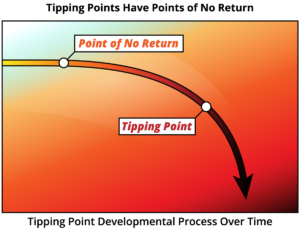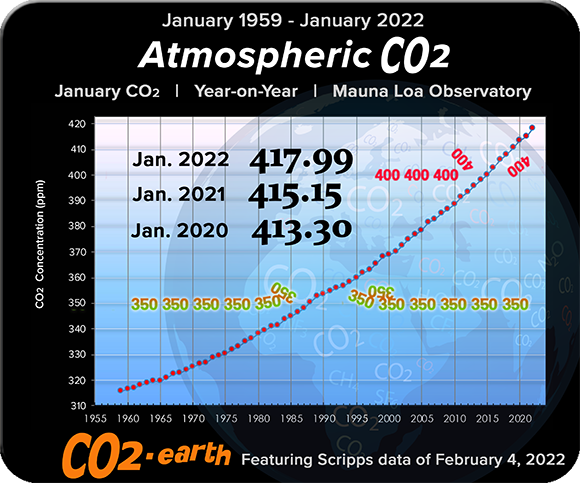Instruções:
Essas aulas de inglês são para alunos intermediários e avançados de inglês como segunda língua. Eles incluem “Ler”, “Ouvir” e “Escrever”. Basta seguir a lição respondendo às perguntas à medida que as encontra.
 Todas as vagas em negrito devem ser traduzidas para seu próprio idioma para ajudar na compreensão do novo vocabulário.
Todas as vagas em negrito devem ser traduzidas para seu próprio idioma para ajudar na compreensão do novo vocabulário.
Please LIKE & SUBSCRIBE my Youtube channel https://www.youtube.com/c/SteveBradeley/videos
This English lesson will take two hours to complete.
INTRODUCTION: COP27 PART TWO
The 2022 United Nations Climate Change Conference, more commonly referred to as Conference of COP27, is the 27th United Nations Climate Change conference and is being held from 6 November until 18 November 2022 in Sharm El Sheikh, Egypt.
TIPPING POINT:
So, what is a tipping point?
In climate science, a tipping point is a critical threshold that, when crossed, leads to large and often irreversible changes in the climate system. If tipping points are crossed, they are likely to have severe impacts on human society.
INTRODUCTION:
You are about to read some horrible climate change and global warming news. When you finish reading my article, among other things, you will know for yourself if we have already entered into a runaway global heating extinction emergency.

There have been many warnings in the past that about half of humanity will unavoidably go extinct by mid-century. After reading this page, you will understand why this will occur. It will become apparent below as you watch the carbon and methane in our atmosphere rise and as higher global temperatures lock in with each new tipping point crossed.
The cumulative primary and secondary effects of runaway global heating consequences will illuminate how the unavoidable extinction of about half of humanity could occur by mid-century 2050.
SECTION ONE:
Only by understanding both why and how mass extinction will happen will you genuinely grasp the accuracy of this warning and that, unfortunately, we also face near-total, but NOT total, extinction.
When you finish both the why and how sections, you will not doubt the objective reasonableness of these strong warnings about mass and near-total extinction. (Near-total extinction is defined as about 50 to 90+ percent of humanity going extinct. )
While reading this article, please remember that many of the tipping point risks below are avoidable and unnecessary. We can still slow and fix runaway global heating if we work together to get close to the 2025 global fossil fuel targets.
And finally, to help you process the following uncomfortable news, I have provided good news at the end of this article! You will even find a plan for what you can do to help slow and fix the runaway global heating extinction emergency.
LISTENING SECTION:
Watch and listen to the video below and then answer the seven (7) questions below. The video lesson explains in a simple way just what a ‘tipping point ‘ is. After watching, answer the questions below the video.
QUESTIONS:
- Explain to the teacher the relationship between a climate tipping point and the illustration used with the guy falling off the chair.
- What is the irriversible temperature in degrees of the Greenland ice cap?
- At tipping point 4 will the Amazon rain forest get wetter or dryer at a 2 to 3 degree increase in global temperature?
- At tipping point 6 the perma-frost melts and releases what two gases into the atmosphere?
- The coral reefs are being bleached. What does this mean?
- Where is the ‘Great Barrier Reef’?
- During the last few minutes of the video she used the expression ‘forewarned is forearmed’ what does this mean?
SECTION TWO:
A quick overview of the four extinction accelerating tipping points
There are just four critical atmospheric carbon-based global warming accelerating tipping points and deadlines to never forget.
Atmospheric carbon (CO2) is measured in parts per million (ppm.) If you look a bit farther down the page, you will see an atmospheric carbon CO2 graph that will give you an initial idea of our current danger level.
Here is a quick overview of the atmospheric carbon danger levels:
ONE:
The carbon 386 tipping point, which we passed in 2015. At this point, we entered into the beginning and first phase of runaway global heating. (This was discovered by James Hansen, the NASA scientist who was one of the first to warn the world of the extinction threat.)
TWO:
The 2025 carbon 425-450 ppm tipping point. (This is the second phase of runaway global heating, contributing to an unavoidable extinction process for half of humanity by mid-century 2050 which is less than 28 years away.)
THREE:
The 2042-2067 or earlier carbon 500 ppm tipping point begins the runaway global ice melt. (This is the third phase of runaway global heating, which accelerates the unavoidable extinction process for half of humanity by mid-century and can lead to the extinction of an even greater portion of humanity.)
FOUR:
The 2063-2072 or earlier, the carbon 600 ppm near-total human extinction tipping point due to massive methane releases from the permafrost and the oceans. (This tipping point creates the fourth phase of runaway global heating.)
FIVE:
The post-2072, the carbon 750 ppm final and fifth phase of runaway global heating. (This crossed threshold leads to a total human and biological life extinction.)
SECTION THREE:
Of these four still active tipping points, 2025 is the most important, which is only THREE YEARS AWAY. Once we cross the 2025 tipping point, any realistic or practical control of our global warming future to prevent mass extinction is all but over for centuries to thousands of years. If we pass all four critical deadlines and tipping points, we will experience human, animal, and biological extinction. We also will complete economic, social, and political chaos and collapse
That is a powerful statement.
The current global warming consequences will be like a day at the beach compared to what is coming if we trigger the four global warming tipping points described above. (Those current consequences are massive and escalating wildfires, heat waves, droughts, flooding, rain bombs, extreme and record-breaking weather, bomb cyclones, sea-level rise, etc.
Once you understand the four tipping points and deadlines, you can plan for your future safety or your smartest business moves in a rapidly deteriorating environment. The following sections will discuss most aspects of these global warming tipping points in detail.
But, before you can fully grasp the insane danger of crossing any of the four key tipping points below, you will need to understand how we measure carbon in the atmosphere. (Much of today’s atmospheric carbon is caused by burning fossil fuels.)
SECTION FOUR:
How we measure global warming and what increasing carbon dioxide in the atmosphere tells us about future global warming and our extinction
Before you can fully grasp the danger of crossing the four key extinction-accelerating tipping points below, you will need to understand how to measure carbon in the atmosphere. (Carbon is the main greenhouse gas that we are creating by our fossil fuel use that is causing global warming.)
Atmospheric carbon from fossil fuel burning is the main human-caused factor in the escalating global warming we are experiencing now. The current level of carbon in our atmosphere is tracked using what is called the Keeling curve.
Each year, many measurements are taken at Mauna Loa, Hawaii to determine the parts per million (ppm) of carbon in the atmosphere at that time. At the beginning of the Industrial Revolution at around 1880, before we began fossil fuel burning, our atmospheric carbon ppm level was at about 270. Here is the Keeling curve graph between January 1959 and January of 2022.

You can see, we are not doing very well. No matter what you hear in the media, if the total carbon ppm level is not going down or carbon’s average ppm level per year is not falling or at least slowing its steep increase, we are not making any significant progress on resolving the escalating global warming emergency. Total atmospheric carbon and carbon’s average ppm level per year are the most dependable measurements of our progress and a predictor of what will be happening with global warming and its many consequences.
How do we know if we’re making honest progress in reducing carbon dioxide to reduce escalating global warming?
There are at least two ways we will be able to tell that we are making honest progress in reducing global warming:
1. When we see our average annual increase in carbon ppm levels (currently at about 3 ppm per year) begin dropping, remaining at the current level, or at least rising at a slower rate.
2. When we start seeing the above Keeling graph levels dropping from the current carbon ppm level (approximately 420 ppm) to carbon 350-325 ppm.
A quick look at the historic rise of carbon in the atmosphere
On average, over the last 60 years, for every additional 25 parts per million (ppm) of carbon that goes into the atmosphere, our average global temperature goes up .5 degrees Fahrenheit or about .25 degrees C. On average, over the last 6 decades, we have been adding about an increase of 3 + additional carbon ppm into the atmosphere each year.
If you look at the trendline on the graph above, you can clearly see we are in serious trouble! In spite of everything you are hearing about all we have done to reduce global warming over the past 30+ years, you can clearly see that global warming from increased atmospheric carbon is not only continuing to get worse, but it is also getting worse at an even faster rate.
SECTION FIVE:
It is also critical to understand that the ever-increasing damage that we are doing to our life-critical environment is primarily because of our carbon pollution of the atmosphere and its consequent global warming. Worse yet, this warming will not reverse itself for hundreds to thousands of years from now!
What you will find below is the how, when, and why the next wave of crossed global warming tipping points will not only severely worsen our lives but also bring about the extinction of most of humanity. Before that extinction occurs, we will experience escalating economic, political, and social chaos within our lifetimes.
When reading the four tipping points described below, keep in mind that:
1. We are almost out of time to do something about them.
2. The following four tipping points both define and highlight the key elements and essence of what makes up our current global warming extinction emergency.
3. The first three tipping points trigger an unavoidable mass extinction by mid-century. The last tipping point triggers near-total extinction not long after that.
SECTION SIX:
To set the final stage for your discovery of the four critical tipping points and deadlines, it is also advantageous to review what is happening in our climate right now:
1. At our current atmospheric carbon levels, we are already experiencing more and worsening extreme droughts and storms, wildfires, rain bombs, bomb cyclones, hurricanes, and other wild and unseasonable weather.
2. At our current atmospheric carbon level of about 420 ppm, the stability of the bellwether West Antarctic ice sheet has already been breached and this ice loss is now irreversible. (This ice sheet plays a critical role in rising sea levels. This ice sheet is also an excellent example of one of many critical global warming tipping points the world has hurdled past far faster than anyone had predicted or foreseen.)
3. The Earth’s temperature has risen radically (exponentially) since the industrial revolution from the previous stable range it held for thousands of years. It will continue to rise radically as we fail to reduce our global fossil fuel use.
Since 1970 alone, average global temperature rose from preindustrial levels from .7 degrees Celcius to 1.4 degrees Celcius. That is a faster average global temperature rise than has occurred in over one million years! At our current increasing fossil fuel use rates, we will soon cross the 2.0 – 2.7 Celcius degree increase from the preindustrial levels mark sometime near 2025.
SECTION SEVEN:
Here are the four critical levels of global warming extinction triggering, accelerating, and executing tipping points we will cross in the near future if we fail to act effectively
~~~~~~~~~~~~~~~~~~~~~~
Below are the four most important global warming tipping point levels within our complex climate system, which will involve interacting climate, biological and human systems, and subsystems.
The four critical atmospheric carbon-based global warming accelerating tipping points and deadlines to never forget are:
1. The 2025 carbon 425-450 ppm tipping point level. (This tipping point significantly accelerates and initiates the complete runaway global warming process of triggering more and more critical global warming tipping points at faster and faster rates. Once we cross this carbon 425-450 ppm tipping point, the average global temperature will continue to rise out of our control. It will continue rising, powered by the laws of climate physics and the natural forces of the climate system.
This tipping point, if avoided, will allow us to at least slow down the currently unavoidable extinction of half of humanity by mid-century so that more of us can live longer. On the other hand, this tipping point, if crossed, will lead us within a few additional decades beyond the unavoidable extinction of half of humanity into total human extinction.)
2. The extinction-accelerating, runaway global ice melting carbon 500 ppm tipping point level. (ALL ice and ALL glaciers on Earth will enter a near-unstoppable process of a complete meltdown!
3. The carbon 600 ppm total human extinction, runaway massive methane release tipping point level.
4. The above carbon 750 ppm runaway greenhouse gas effect and atmosphere removal tipping point level. This is the final global warming tipping point level of carbon 750 and beyond. It leads to the near-total extinction of all biological life on Earth, needing oxygen to survive. This is because our average global temperature is rising so high that Earth’s oxygen atmosphere is stripped off into space and everything dies.
SECTION EIGHT:
It is important to note that every advanced national intelligence agency around the world with adequate long-term climate research funding already knows about the above four tipping points and precisely what will happen when we cross them. (Just like they knew that we had to be prepared for the next pandemic.) Yet, they chose to keep this information a carefully guarded national secret and not urge their politicians to adequately and publically prepare or act.
The reason for this secrecy may be simple. If you knew your governments were secretly preparing to save themselves and their key personnel from what you are about to read, you probably would be angry, fearful, and in panic. Widespread public anger and fear would substantially interfere with or delay governmental efforts to secretly prepare their survival plans. To think that the best-resourced national intelligence agencies do not have this information as well as the big data meta-systemic analysis skills to review current climate research studies and see the coming extinction emergency is naive.
SECTION NINE:
I know that the previous section is a lot to take in. After you read about the detailed consequences of crossing these four critical global warming consequences below, I think you too will understand why governments have chosen to keep this information secret and are trying to protect themselves first. This secrecy and public denial of the global warming extinction emergency is not only logical for their survival but also necessary if anything is going to survive!
After you finish this article, you will also know the most probable cause of an inevitable World War III if we let this extinction emergency get out of control. That inevitability will be a massive nuclear, biological and/or chemical war for the last global warming safer zones where a tiny desperate portion of humanity may be able to survive if we do not cross the fourth and final tipping point.
SECTION TEN:
The first extinction-triggering tipping point that we will cross at or before 2025: is the carbon 425-450 ppm tipping point
Overview of first tipping point:
At this threshold of atmospheric carbon, we will cross many new climate tipping points, and we will activate many new climate feedback loops. These occurrences will significantly accelerate and ensure the extinction of about half of humanity by mid-century.
Beginning about 2025-2031, the severity, frequency, and scale of current climate change consequences will rise exponentially. These rising consequences include heatwaves, droughts, wildfires, hurricanes, flooding, rain bombs, extreme wind, dust, wildfire smoke storms, unseasonable cold spells, and abnormal seasonal changes.
This increase in climate consequence severity, frequency, and scale is because we have already crossed into the beginning stages of runaway global heating. If you imagined runaway global heating like a train without brakes rolling down a mountain that is getting steeper and steeper, you would have a good idea about the seriousness of our climate consequences soon rising exponentially.
Because climate change consequences will soon begin rising exponentially, you may have only another 3-9 more years of relative climate change stability, depending upon where you live. (Beginning around 2025, if you are in a high-risk climate change area, the global heating consequences that you are already experiencing will start to become far worse than you are experiencing currently.)
Saying we have only three to, at best, nine more years left to control climate change and global heating does not mean that humanity will go totally extinct in 3-9 years! It only means that if we do not do what is necessary to radically reduce global fossil fuel use over the next 3 to 9 years to meet the 2025 global targets:
1. Many more climate change consequences will begin to occur at vastly higher levels of severity, frequency, and scale. (They will increase exponentially.) And,
2. Humanity will face many more unavoidable cataclysmic climate change consequences (such as about half of humanity going extinct by mid-century.)
3. We will face near-total extinction because we will keep moving into the danger levels of the second and third extinction-accelerating tipping point levels.
To put the danger of this first near-total extinction-triggering tipping point in the proper perspective, it is vital to remember that atmospheric carbon was at about 270 ppm for hundreds of thousands of years. At carbon 270 ppm, there was climate stability.
Our best climate scientists have now calculated that if we kept atmospheric carbon below the carbon 350 ppm level, we would avoid the worse consequences of climate change, global warming, and extinction.
The most important thing to remember is that crossing the first extinction-triggering tipping point will bring about an unavoidable extinction of about half of humanity by mid-century. We also will experience the unavoidable extinction of about half of humanity because we will trigger far too many of the primary and secondary runaway global heating consequences, many occurring simultaneously.
Most people, unfortunately, do not understand the extinction-preventing 2025 global fossil fuel reduction deadline. Moreover, they do not understand the physics and mechanics behind the laws of climate momentum and human inertia.
Our current climate momentum factors mean that even if we stopped ALL global burning of fossil fuels today, global temperatures would continue rising for the next 2-3 (or more) decades. Furthermore, it also means that the radical 2025 global fossil fuel reductions we must make immediately will not deliver significant and observable benefits to the average citizen for about 2-3 decades. Finally, if we ever do make the needed fossil fuel reductions, this climate momentum time lag will challenge the patience and understanding of most everyone, not just our politicians.
Knowing what we know about how the world has reacted so far to avoid the conequences described above I for one am not confident that we as a human race are capable of making the changes required to avoid extinction. Therefore, it seems to me that it’s enevitable. I’m not a religeous man as most of you know, but my last words in this lesson are, “God help us.”
WRITING EXERCISE:
In 150 words sumerise the idea of a ‘tipping point’
GRAMMAR:
Please one example of the FUTURE PERFECT PROGRESSIVE tense. Before doing so do a revision of the tense by watching the video below.
Further information can be found at https://www.joboneforhumanity.org

